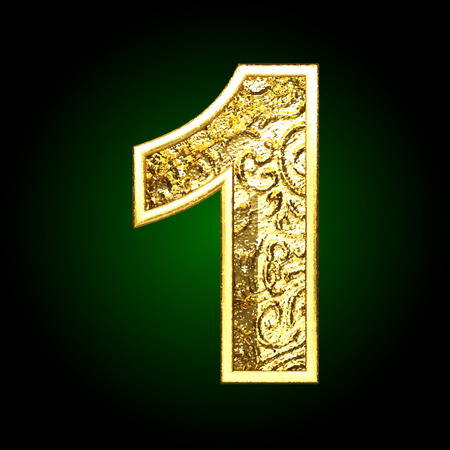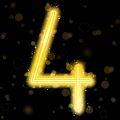Setting the Scene: The Modern British Mystic
Across the UK, a quiet yet profound spiritual renaissance is underway. In city flats overlooking bustling high streets and in countryside cottages nestled among rolling hills, modern Britons are rediscovering the allure of mystical practices. This revival isn’t simply a nostalgic nod to the past; rather, it represents a thoughtful blending of tradition with the realities of contemporary life. Today’s British mystic is as likely to consult a birth chart app on their smartphone as they are to flip through a battered copy of Rider-Waite tarot cards handed down from a grandparent. Astrology and tarot—once relegated to the fringes or dismissed as mere superstition—are being reimagined as practical tools for self-reflection and empowerment. This fusion reflects the uniquely British knack for adaptation: drawing from ancient wisdom while embracing the innovations of the digital age. Whether gathering with friends for a new moon reading in a London café or quietly journalling insights gleaned from both zodiac transits and card spreads, today’s seekers weave together threads of heritage and modernity. In doing so, they create personalised rituals that honour the past but speak directly to present-day challenges and aspirations.
2. Foundations of Astrology and Tarot in British Tradition
To truly appreciate the art of blending astrology and tarot for the modern British mystic, it is crucial to understand their historical underpinnings within the UK’s unique cultural landscape. Both systems have deep roots in British history, having evolved through a complex web of folklore, spiritual inquiry, and local adaptation.
Astrology: From Court Astrologers to Folk Wisdom
Astrology found its footing in Britain as early as the medieval period, where royal courts employed astrologers not only to predict political outcomes but also to guide personal decisions. Over centuries, astrological wisdom filtered down from the elite to everyday folk, often merging with Celtic and Anglo-Saxon beliefs about the stars and seasons.
| Era | Astrological Practice in Britain |
|---|---|
| Medieval | Court astrologers advising royalty; lunar calendars guiding agriculture |
| Tudor & Stuart | Almanacs for commoners; astrology entwined with herbalism and healing |
| Victorian | Spiritualist revival; astrology popularised in newspapers and parlours |
| Modern | Birth charts and horoscopes part of mainstream culture; integration with other mystical arts like tarot |
Tarot: Mystical Cards and Local Interpretations
The tarot’s journey into British tradition began in earnest during the 19th century, brought by occult societies such as the Hermetic Order of the Golden Dawn. In Britain, tarot absorbed regional symbolism—oak trees, ravens, and Arthurian legends—creating a uniquely local flavour distinct from Continental decks.
Folkloric Connections: Merging Myth with Mysticism
British folklore has always been fertile ground for mystical arts. Astrology’s planetary correspondences were mapped onto ancient festivals like Beltane and Samhain, while tarot readings were often conducted at crossroads or near sacred wells believed to amplify divinatory power. These practices wove together celestial and earthly energies in a way that remains distinctly British.
Local Adaptations: Language and Lore
The language used in British astrology and tarot reflects local idioms—‘the Wheel of Fortune’ conjures images of fate in Shakespearean drama, while astrological houses are compared to rooms in a classic English manor. Such analogies make these mystical systems both accessible and resonant for the British seeker.
This rich tapestry of tradition forms the foundation upon which today’s daily grimoire is built, allowing modern practitioners to draw upon centuries of layered meaning as they blend astrology and tarot for personal insight and empowerment.

3. Integrating Astrology and Tarot: Practical Approaches
For the British modern mystic, blending astrology and tarot offers a rich, layered approach to self-discovery and spiritual growth. Understanding how these two systems interlock requires more than simply drawing cards or checking horoscopes—it involves recognising logical frameworks that honour both traditions while adapting them to the unique rhythms of British life.
Logical Frameworks for Daily Integration
The first step is to establish a daily ritual that respects both astrological transits and tarot symbolism. Begin by consulting the current planetary alignments, focusing especially on the lunar phases—a key aspect of British folklore and seasonal celebrations such as Imbolc, Beltane, and Samhain. Pair this with a single-card tarot draw each morning, allowing the astrological context to inform your interpretation of the card’s message. For example, if the Moon is waxing in Taurus, draw upon themes of stability, comfort, and practical beauty when interpreting your card.
Seasonal Cycles and Cultural Resonance
British culture is deeply rooted in its changing seasons, from misty autumn mornings to the luminous midsummer evenings. Tailor your grimoire entries to reflect these cycles: during spring’s renewal, focus on cards and planetary energies that speak to growth and beginnings; as winter approaches, give weight to introspective cards under Saturnine influence. Anchor your readings in local traditions—such as harvest festivals or St. George’s Day—to deepen their relevance. This not only aligns your practice with nature’s rhythm but also weaves in centuries-old British customs.
Daily Practice Example
Each day, note the astrological weather: Is Mercury retrograde in Virgo? Is Venus conjunct Jupiter in Libra? Record these insights alongside your tarot pull, asking how one might clarify or expand upon the other. If The Hermit appears during a Capricorn Moon, consider what solitude or discipline means within your current responsibilities—perhaps reflecting on the stoic qualities often celebrated in British literature and history.
By logically integrating astrological transits with tarot wisdom—and grounding both within Britain’s cultural landscape—you craft a daily practice that is both practical and profoundly personal. This methodical synthesis elevates your grimoire from a simple diary to a dynamic tool for mindful living attuned to both cosmic and earthly cycles.
4. Crafting Your Daily Rituals: The Grimoire Approach
Building a daily grimoire that seamlessly blends astrology and tarot is both an art and a science, especially for the British modern mystic. Here’s a systematic breakdown of how to create a personalised ritual that fits comfortably into your everyday UK life, from the first cuppa in the morning to winding down after a long day. Start by selecting a sturdy notebook or journal—perhaps something with a bit of heritage, like an embossed leather-bound book you might pick up at Waterstones or a local market in Camden.
Step 1: Setting Your Foundation
Begin each day by noting the astrological weather. Check which zodiac sign the moon currently occupies (easily found on reputable British astrology sites) and jot this down alongside any major planetary aspects. For extra authenticity, include the date using the British format (DD/MM/YYYY). This simple act roots your grimoire firmly in both time and place.
Step 2: Integrating Tarot Draws
Before you leave for work or uni, pull a single tarot card as your ‘card of the day.’ Record not just the card itself but also your initial impressions—think of it as your mystical equivalent to checking the forecast on BBC Weather. If you commute via the Tube or bus, take a moment during your journey to reflect on how this card might influence your interactions or decisions throughout the day.
Sample Morning Grimoire Entry
| Date | Lunar Phase & Zodiac | Main Astrological Aspect | Tarot Card | Interpretation/Reflection |
|---|---|---|---|---|
| 12/06/2024 | Waxing Crescent in Gemini | Mars conjunct Venus | The Lovers | A good day for heartfelt conversations; consider reaching out to an old mate. |
Step 3: Tailoring Rituals to Your Lifestyle
Your rituals needn’t be elaborate; they should fit into daily routines familiar to anyone living in Britain. Perhaps you light a candle before tea time, meditate for five minutes after supper, or spend Sunday mornings updating your grimoire while listening to Radio 4. The key is consistency and making these practices feel as natural as putting on your wellies when it rains.
Quick Reference Table: Everyday British Ritual Ideas
| Time of Day | Suggested Ritual Action |
|---|---|
| Morning | Pulled tarot card reflection with your tea or coffee |
| Lunchtime | Jotting down mid-day insights on astrological transits during lunch break in the park |
| Evening | Candle lighting and brief journaling before bed with a classic novel at hand |
Step 4: Review and Adaptation
Every few weeks, use a quiet Sunday afternoon—perhaps while enjoying a roast or after a stroll through Hyde Park—to review past entries. Notice patterns between astrological shifts, tarot draws, and real-life outcomes. This reflective practice sharpens both intuition and self-awareness, grounding your mystical journey within the unique rhythms of British daily life.
5. Reflecting on the Day: Mindful Practices for the UK Lifestyle
Integrating astrology and tarot into your daily grimoire isn’t just about prediction—it’s also a path to deeper self-awareness through reflection. In the context of British life, whether you reside in a bustling city like London or a tranquil corner of the Lake District, mindful journalling and reflective exercises help anchor mystical insights within real-world rhythms.
Daily Journalling with Astrological and Tarot Insights
Begin your evening by noting the day’s astrological transits, such as the moon phase or planetary aspects that may have influenced your mood or interactions. Pair this with a brief reflection on your daily tarot card—did its energy manifest in your experiences? For instance, if you drew The Hermit on a rainy Manchester afternoon, did you find yourself craving solitude or introspection?
Urban Mindfulness: City Rhythms and Reflection
For those navigating the dynamic pace of British cities, mindfulness can be woven into familiar routines. Consider reflective pauses during your commute on the Tube or while queuing for a coffee. Use these moments to mentally revisit your tarot draw or astrological guidance for the day. Ask yourself: How did these archetypes play out amid urban encounters? Did Mercury in retrograde test your patience with transport delays or communication snags?
Rural Grounding: Nature as a Portal to Insight
If you’re rooted in the countryside, allow the landscape to shape your reflective practice. A walk along a Cornish coastal path or through Yorkshire fields provides an ideal backdrop for meditative journalling. Take note of synchronicities between natural cycles—such as shifting tides or blooming wildflowers—and astrological symbolism. What does today’s planetary alignment reveal about your connection to place and season?
Structured Evening Rituals
Close each day with a structured ritual: light a candle, brew a cup of herbal tea (perhaps chamomile or nettle), and review your journal entries. Identify recurring themes or emotions linked to specific cards or celestial events. Over time, this mindful synthesis of divinatory tools and lived experience cultivates self-knowledge attuned to both personal growth and the subtle cadences of British life.
6. Community and Tradition: Connecting in the British Mystic Scene
The journey of blending astrology and tarot is not a solitary path. Within Britain, the modern mystic benefits from a rich tapestry of communal and traditional practices that foster both learning and belonging. Local gatherings—ranging from pub-based tarot circles in London to astrology workshops nestled in the countryside—offer spaces for seekers to exchange ideas, hone their craft, and celebrate the turning of the Wheel of the Year. These meetups often echo Britain’s deep-rooted appreciation for ritual and conviviality, blending ancient wisdom with contemporary camaraderie.
Local Gatherings: Keeping Traditions Alive
British mystic communities often prioritise face-to-face connection. In cities like Bristol or Edinburgh, regular events bring together enthusiasts of all levels to share readings, discuss planetary movements, or mark seasonal festivals such as Beltane or Samhain. These physical gatherings reinforce local traditions, infusing modern practice with uniquely British folklore—be it tales of ley lines, Arthurian legends, or the enduring symbolism found in country churchyards and stone circles.
Online Communities: Expanding the Circle
For those seeking connection beyond their immediate locale, online spaces have become invaluable. British forums, Facebook groups, and Discord channels dedicated to astrology and tarot enable ongoing dialogue, resource sharing, and mentorship. Virtual covens host full-moon rituals via video call; Instagram accounts offer daily card pulls with a distinctly British twist—think references to the weather or nods to classic British literature. These digital platforms democratise access to knowledge while fostering a sense of kinship among practitioners scattered across the UK’s diverse regions.
Balancing Innovation and Heritage
The strength of the British modern mystic scene lies in its ability to balance innovation with respect for tradition. Whether attending a candlelit tarot salon in Brighton or joining an online solstice meditation led by a Scottish astrologer, practitioners weave together personal exploration with communal support. This blend ensures that both astrology and tarot remain living traditions—ever evolving yet deeply anchored in the collective spirit unique to Britain’s mystical landscape.


